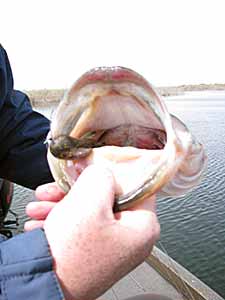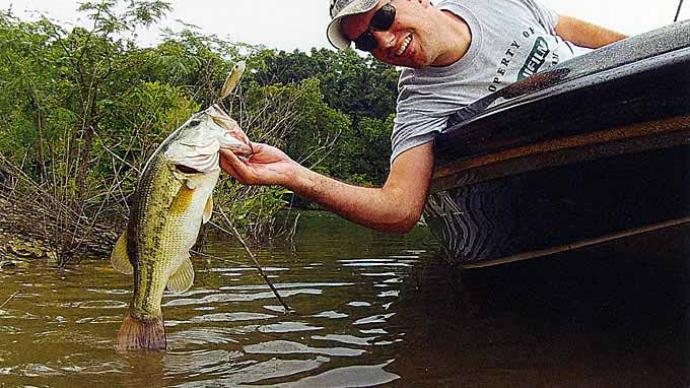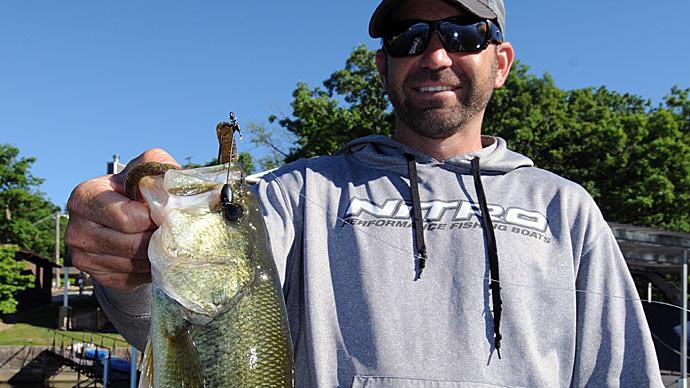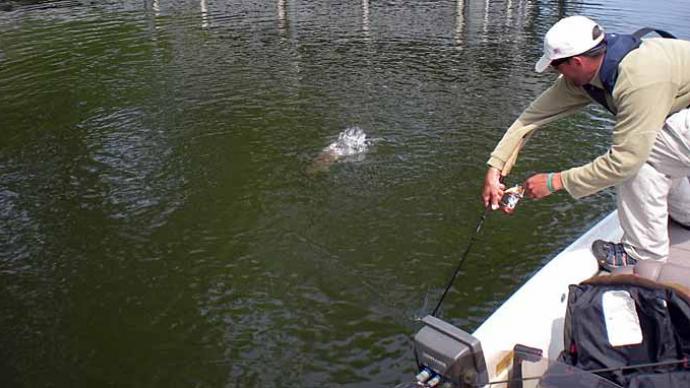
If I were to tell you I flip with 12- to 17-pound-line on the California Delta or even on Clear Lake and Berryessa, there might be a few folks who'd think I was joking. But, towards late summer and the early fall, and with the right combination of reels, rods, line and tackle, flipping with lighter line can make the difference between catching a lot of fish, or just going fishing.
In the middle of the summer when the grass beds really get thick, I begin thinking about a light-line presentation - something I can work in super-clear water. Grass filters water, so the more grass grows the clearer the water becomes. Water clarity that just a couple of months previous might have demanded 50-pound braided line, now requires more of a finesse presentation to get the fish.
One of the problems people have is trusting thick heavy grass to smaller line and rigs, and that is a real problem if you fish some of our incredible lakes in the West. I've dealt with this fear by fishing my rigs in all types of tough conditions and have gained confidence in the presentation.
The first thing I do is choose the water I want to fish. On the Delta, I'll look for a shallow weed bed that has a steady and quick drop from around 2 feet down to 15 feet. On Berryessa or Clear Lake, I'll locate docks that are sitting in shallow water but then drop off quickly. At this time of year, the bass need deeper water or shade, something to allow them to cool off a bit. But, they will still roam the shallows and hug the grass. These are the fish I'm after.
In the early morning, I'll use a standard flipping rig - an 8-foot flipping stick with a Daiwa reel, 17-pound monofilament line, a 3/8-ounce In-line jig made by Zipper Worm with a craw on the back. I'll use a 4-inch Riverside craw in either black and red, or brown and red, or even straight red. Crawfish are red this time of year because water temperatures are so hot, so red is an easy choice of color.
My technique is dependent on the bank I'm fishing. By using lighter line, I am able to position my boat farther from the area I'm fishing. A longer pitch or flip allows the bait to work from the super-shallow water to the the water right under the boat. I'll concentrate on fishing the entire area. The lighter line is easier to pitch a long way and will drop quickly to the level of the dropping depth. The bass can be at any of the levels I fish.
It doesn't matter if the grass beds are in close to shore or not, the important part is the bottom. Don't forget that these fish want shade, and cooler water, so the will change depths accordingly.
As the sun gets up and the fish move out from the shallows and become more skittish due to the clarity of the water, I'll drop down to my 7-foot 6-inch flipping and pitching stick, a Daiwa reel and 12-pound Line. My baits get smaller as well and I end up with a small tube bait on a 1/16-ounce weight and a 3/0 hook for most of the rest of the day. I may move to a 4-inch finesse ZipperWorm as well, always with a light weight - something that will be more of a subtle presentation. Colors shift to the shad colors of watermelon or green pumpkin, anything that appears more natural.
Depth finders are a crucial part of my strategy this time of year. My Lowrance finder shows the drops very well and I can easily tell where to position my boat. On the Delta, for example, I'll look for current breaks, and banks that drop off into about 15 feet in the main river channel. Having a good finder is a must. Too much of the Delta looks the same, so being able to identify the depth changes makes all the difference in the world.
I also like to identify the bottom, whether it is hard or soft - a soft bottom being where the crawdads will be.
The GPS system on the Lowrance is handy to mark the spots I find, which saves me a lot of time when I'm prefishing. My boat woudn't be without one.
The keys to flipping and pitching with lighter line is having the right combination of equipment. Downsize everything from your rod to your bait, and concentrate on the areas I've mentioned, banks that drop quickly to 15 feet, and boat docks that do the same. If you learn to fish with lighter line in the fall, you will catch some quality fish.
A lot of people have wondered why I moved from the Bay area to Phoenix, Arizona. I have been known as a pretty good stained-water angler, and there is no doubt I've been spoiled fishing the northern California lakes most of my life. Arizona has many clear-water lakes that pose real challenges for me. I want to broaden my fishing experiences, and Arizona provides that opportunity. Besides, since I fish the Elite circuit I'm now that much closer to each tournament. Professional bass angling is a tough profession, and I feel I'm learning an enormous amount each and every year I fish. Arizona should another learning environment.
Good luck with lighter line flipping, and we'll see you on the water.
Reprinted with permission from Bass West Magazine




